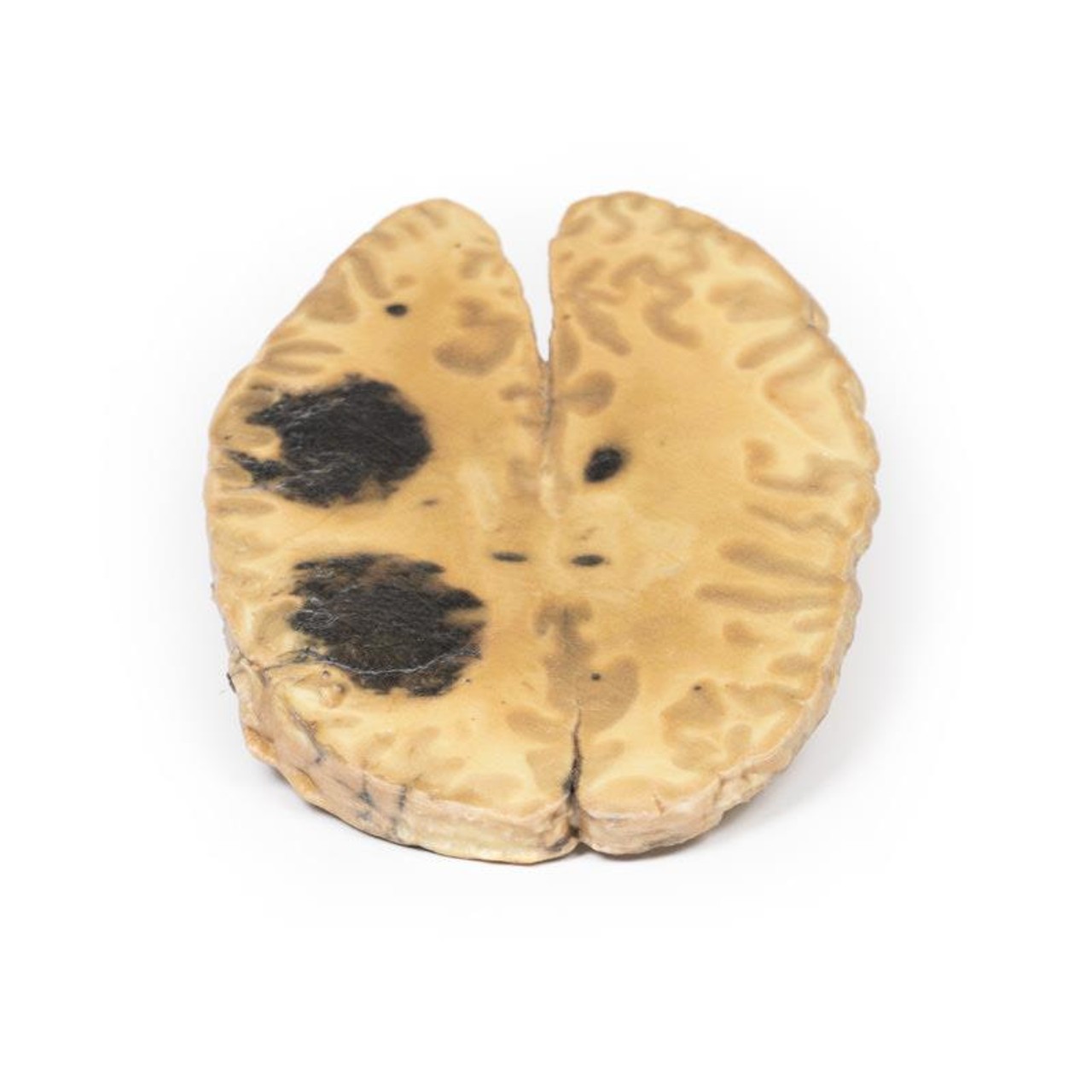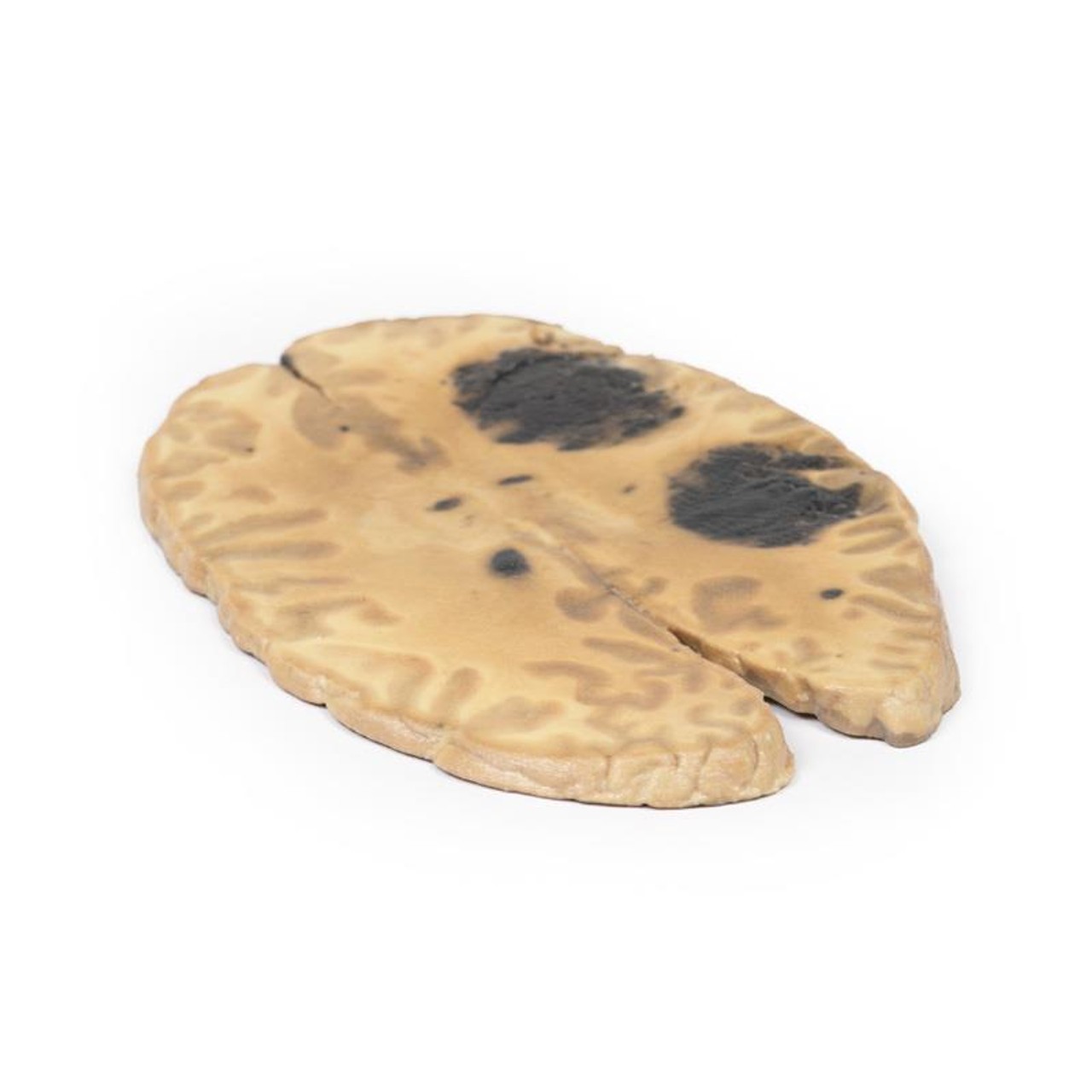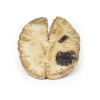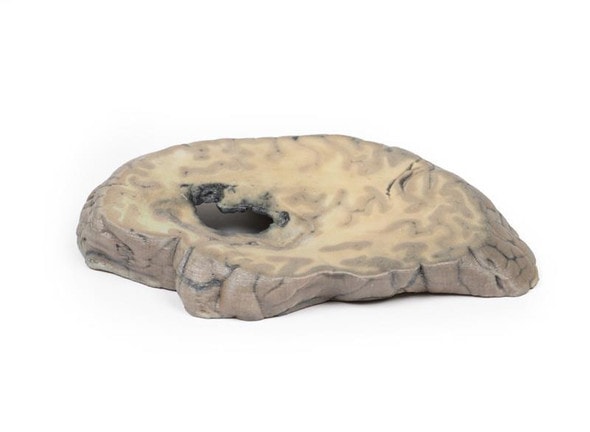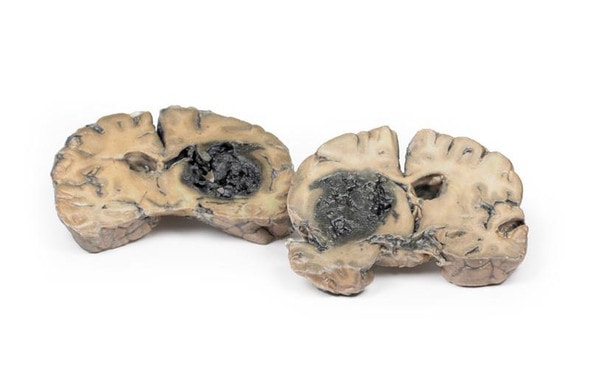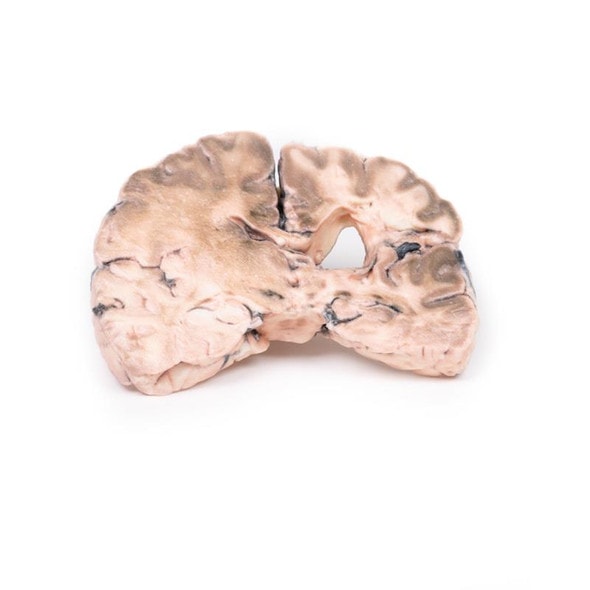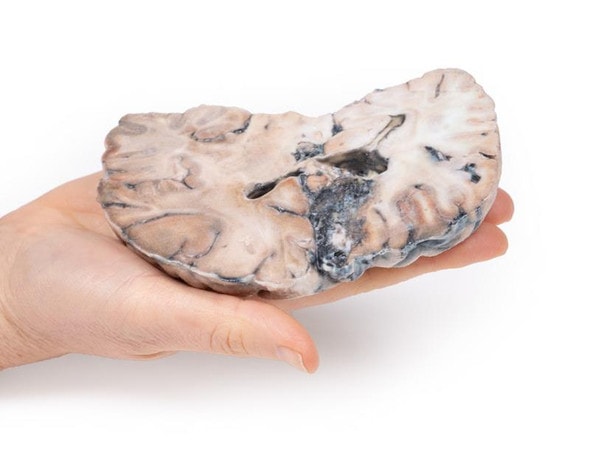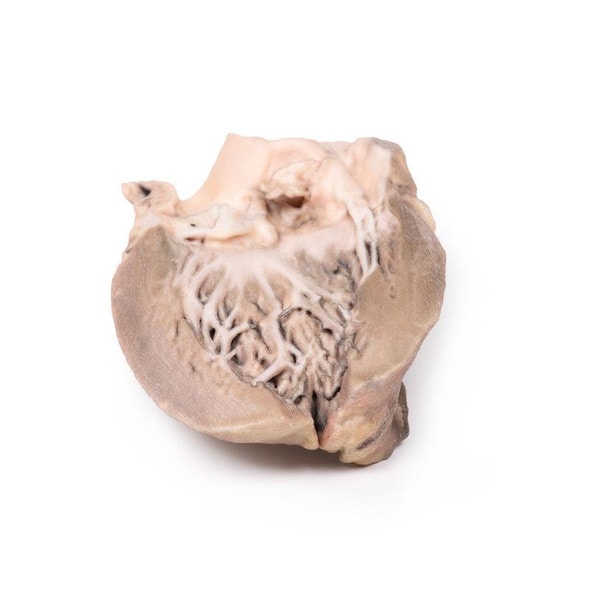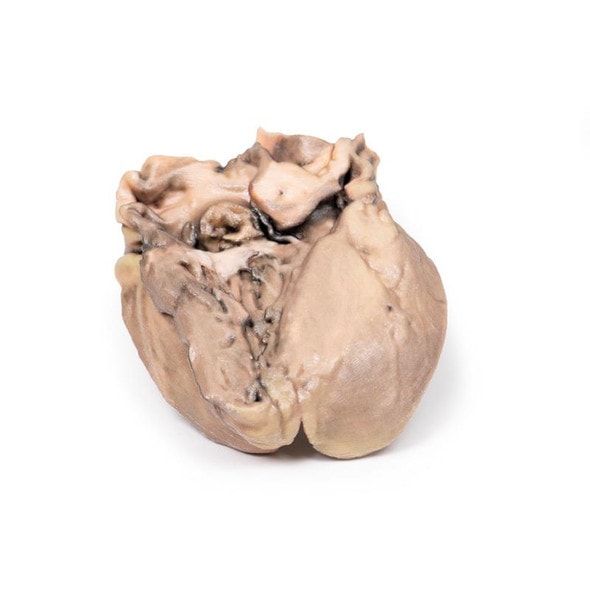- Home
- Anatomy Models
- Head & Neck Anatomy Models
- 3D Printed Cerebral Haemorrhage, Secondary to Acute Myeloid Leukaemia
Description
Developed from real patient case study specimens, the 3D printed anatomy model pathology series introduces an unmatched level of realism in human anatomy models. Each 3D printed anatomy model is a high-fidelity replica of a human cadaveric specimen, focusing on the key morbidity presentations that led to the deceasement of the patient. With advances in 3D printing materials and techniques, these stories can come to life in an ethical, consistently reproduceable, and easy to handle format. Ideal for the most advanced anatomical and pathological study, and backed by authentic case study details, students, instructors, and experts alike will discover a new level of anatomical study with the 3D printed anatomy model pathology series.
Clinical History
A 22-year-old male presented with a 2-week history of generalized malaise, weight loss and bruised skin without any trauma. He recently developed 5 days of productive cough and fevers. He was admitted to hospital for further investigations but had a sudden loss of consciousness and died a few minutes after admission to hospital.
Pathology
The specimen is a horizontal slice of brain displaying the superior cut surface. In the right frontal and parietal regions are two large intraparenchymal hemorrhages each 5 cm in maximum diameter. Several smaller hemorrhages are present in the white matter of both hemispheres. This is an example of multiple intraparenchymal cerebral hemorrhages in a patient with acute myeloid leukemia (AML).
Further Information
Intraparenchymal brain hemorrhages are a result of small, ruptured vessels within the brain causing hemorrhage. They are usually associated with sudden onset neurological symptoms. The most common causes for spontaneous (no-traumatic) intraparenchymal hemorrhages are hypertension and cerebral amyloid angiopathy with a peak incidence in the sixth decade of life.
AML is a cancer of hematopoietic progenitors causing bone marrow failure, due to immature blast cell accumulation in the marrow. The immature blasts affect the production of other bone marrow-derived cells leading to bone marrow failure causing anemia (decreased erythrocytes), thrombocytopenia (decreased platelet production and a hemorrhage tendency) and neutropenia (decreased neutrophil production). These in turn lead to a wide spectrum of disease complications, which must be anticipated and managed. Infection is the leading cause of death in AML as a result of neutropenia. Intracranial hemorrhage is the second most common cause of death in AML, due to low or dysfunctional platelets caused by the thrombocytopenia. A severe form of hemorrhage is termed disseminated intravascular coagulation (DIC) and is common in AML. DIC is characterized by small blood clots developing throughout the bloodstream, blocking capillaries. The increased clotting depletes the platelets and clotting factors needed to control bleeding, causing excessive bleeding.
Symptoms depend on the location and severity of the bleed. Interventions include surgical evacuation of the hematoma, reversal of the coagulopathy, treatment of any seizures, and regulation of the intracranial pressure. Interventions are dependent on the severity of the bleed and clinical context. The 30-day mortality for intracerebral hemorrhage ranges from 35-50% with most deaths occurring in the first 48 hours.
Advantages of 3D Printed Anatomical Models
- 3D printed anatomical models are the most anatomically accurate examples of human anatomy because they are based on real human specimens.
- Avoid the ethical complications and complex handling, storage, and documentation requirements with 3D printed models when compared to human cadaveric specimens.
- 3D printed anatomy models are far less expensive than real human cadaveric specimens.
- Reproducibility and consistency allow for standardization of education and faster availability of models when you need them.
- Customization options are available for specific applications or educational needs. Enlargement, highlighting of specific anatomical structures, cutaway views, and more are just some of the customizations available.
Disadvantages of Human Cadavers
- Access to cadavers can be problematic and ethical complications are hard to avoid. Many countries cannot access cadavers for cultural and religious reasons.
- Human cadavers are costly to procure and require expensive storage facilities and dedicated staff to maintain them. Maintenance of the facility alone is costly.
- The cost to develop a cadaver lab or plastination technique is extremely high. Those funds could purchase hundreds of easy to handle, realistic 3D printed anatomical replicas.
- Wet specimens cannot be used in uncertified labs. Certification is expensive and time-consuming.
- Exposure to preservation fluids and chemicals is known to cause long-term health problems for lab workers and students. 3D printed anatomical replicas are safe to handle without any special equipment.
- Lack of reuse and reproducibility. If a dissection mistake is made, a new specimen has to be used and students have to start all over again.
Disadvantages of Plastinated Specimens
- Like real human cadaveric specimens, plastinated models are extremely expensive.
- Plastinated specimens still require real human samples and pose the same ethical issues as real human cadavers.
- The plastination process is extensive and takes months or longer to complete. 3D printed human anatomical models are available in a fraction of the time.
- Plastinated models, like human cadavers, are one of a kind and can only showcase one presentation of human anatomy.
Advanced 3D Printing Techniques for Superior Results
- Vibrant color offering with 10 million colors
- UV-curable inkjet printing
- High quality 3D printing that can create products that are delicate, extremely precise, and incredibly realistic
- To improve durability of fragile, thin, and delicate arteries, veins or vessels, a clear support material is printed in key areas. This makes the models robust so they can be handled by students easily.

